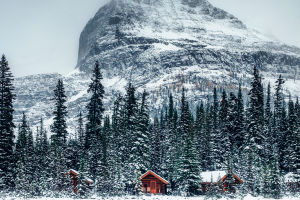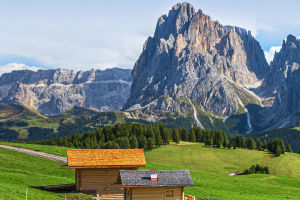The Dolomites, located in the northeastern part of Italy, are part of the Alps and are renowned for their jaw-dropping landscapes, steep cliffs, and dramatic mountain peaks.
Spanning across three regions—Belluno, Bolzano, and Trento—the Dolomites are a UNESCO World Heritage site, attracting visitors from around the globe.
Whether you’re looking to explore alpine lakes, conquer summits, or enjoy quaint mountain villages, the Dolomites offer something for everyone. This guide will provide all the essential details to help plan your trip, including transportation, entry fees, the best times to visit, and tips for a smooth experience.
Best Time to Visit the Dolomites
Choosing the right time to visit the Dolomites is crucial to fully enjoy everything this stunning region offers.
Summer (June to September): This is the best time for hiking, trekking, cycling, and exploring the lush valleys. The weather is warm (typically ranging from 59°F to 77°F), and the flora is in full bloom. Trails are accessible, and there are plenty of outdoor events to enjoy. Summer is also a great time for families and those looking to relax in the alpine villages.
Winter (December to March): If you're a fan of winter sports, this is the season for you. The Dolomites are home to world-class ski resorts like Cortina d'Ampezzo and Val Gardena. Expect cold temperatures (ranging from 23°F to 41°F) and snow-covered mountains perfect for skiing, snowboarding, and snowshoeing.
Spring and Fall (April-May, October-November): These shoulder seasons offer a quieter experience. While the weather can be unpredictable, with temperatures ranging from 50°F to 59°F, it’s an excellent time for those who prefer fewer crowds. Note that some tourist services may be closed during these months, especially in remote areas.
How to Get to the Dolomites
The Dolomites are accessible by air, train, and car. Here’s how you can get there:
By Air: The closest international airports to the Dolomites are in Venice, Verona, and Bolzano. From these airports, you can rent a car or take a bus to reach the Dolomites. The drive from Venice to the Dolomites takes about 2 hours.
By Train: The Dolomites are well-connected by train. The main train stations are in Belluno, Bolzano, and Trento. From these stations, you can take local buses or rent a car to reach mountain resorts.
By Car: Renting a car gives you the flexibility to explore at your own pace. Most major rental companies operate in nearby cities. The roads are well-maintained, but be prepared for winding mountain passes, especially in winter.
Ticket Prices and Opening Hours
While access to the Dolomites themselves is free, certain attractions and activities may require an entry fee.
- Cable Cars and Lifts: To reach some of the highest peaks, you’ll need to use cable cars or lifts. Prices vary depending on the location. For example:
- Cortina d'Ampezzo Ski Resort: A round-trip ticket for the Faloria cable car costs about $27.
- Seceda (Val Gardena): The cable car ticket is approximately $24 for a round trip.
- Alpe di Siusi (Seiser Alm): A round-trip lift ticket costs around $32.
- Ski Passes: Skiing in the Dolomites is one of the top activities. Ski passes for the Dolomiti Superski region range from $43 to $75 per day, depending on the season and area.
- Opening Hours: Most ski resorts operate from December to March, and cable cars are typically open from 8:30 AM to 5:00 PM. For hiking, the trails are generally open year-round, though weather conditions may affect accessibility in winter.
Must-See Destinations in the Dolomites
Here are the top destinations we recommend for an unforgettable experience:
Cortina d'Ampezzo: This famous mountain resort is perfect for both winter sports and summer activities. In winter, Cortina is a hub for skiing, and in the summer, it transforms into a paradise for hikers. Visitors can explore the charming town and dine at some of the region's best restaurants. The average cost of a meal is around $16-$27, and accommodation ranges from $65-$220 per night, depending on the season.
Tre Cime di Lavaredo: One of the most iconic landmarks in the Dolomites, the Tre Cime peaks are a must-visit for hikers. The 3-hour loop trail around the peaks offers breathtaking views of the surrounding landscape. Entry to the area costs around $33 per car, with parking available near the trailheads.
Lago di Braies: Known as the "Pearl of the Dolomites," this stunning alpine lake is one of the most photographed spots in the region. The lake is easily accessible by car, and there is a small fee for parking ($7 per day). You can rent a rowboat for about $22 per hour to enjoy the serene beauty of the lake.
Travel Tips and Practical Advice
Here are some helpful tips to ensure your trip goes smoothly:
Weather Gear: Weather in the mountains can be unpredictable, even in the summer. Always carry a waterproof jacket, sturdy hiking boots, and sun protection. If you’re hiking or skiing, pack layers to adapt to changing temperatures.
Public Transportation: While there are buses connecting some villages, public transport in the Dolomites is limited, especially in remote areas. Renting a car is the best way to get around and explore at your own pace.
Guided Tours: If you’re unfamiliar with the region or outdoor activities, consider booking a guided tour. Many operators offer hiking tours, photography tours, and ski lessons. Prices for guided tours vary, with a half-day hike starting at $43 per person.
Local Cuisine: Don’t miss out on the delicious food! Try speck (a lightly smoked cured meat), canederli (dumplings), and strudel (apple pie). A traditional meal in a mountain hut costs around $16-$27 per person.
Let’s Make It a Trip to Remember!
The Dolomites are more than just mountains—they’re a place where we can pause, breathe deeply, and feel connected to nature. From quiet lakes to towering peaks, every corner holds something worth discovering. With this guide by our side, we’re ready to dive into the beauty, adventure, and charm of this unforgettable destination.
If you're planning to go or have already been, we’d love to hear from you! Share your favorite spots, helpful tips, or even that one view that took your breath away. Here's to great journeys and even better memories.


